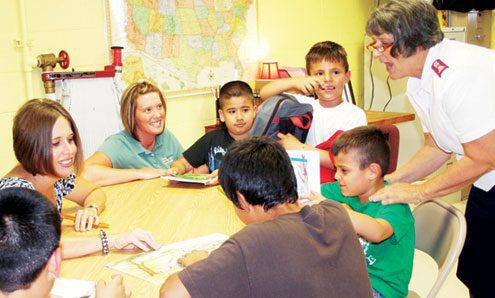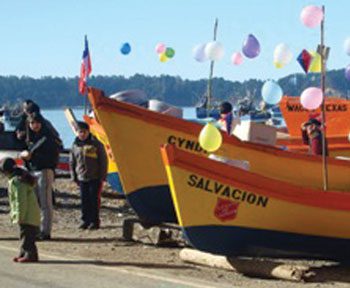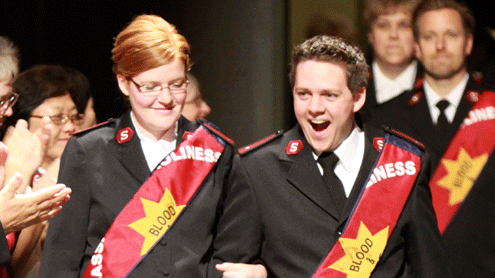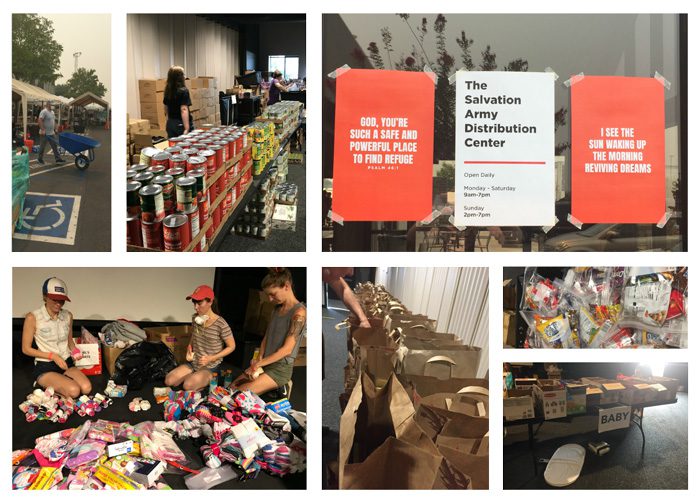Transitional housing is a start toward wholeness.
by Sue Schumann Warner
Life goes on in Haiti.
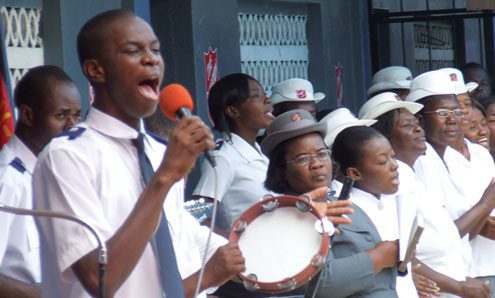 Nine months after the devastating earthquake that killed 230,000, injured more than 300,000, and left 1.3 million homeless, Haiti’s needs continue: shelter, sanitation, stability…and hope.
Nine months after the devastating earthquake that killed 230,000, injured more than 300,000, and left 1.3 million homeless, Haiti’s needs continue: shelter, sanitation, stability…and hope.
In Port-au-Prince, rubble is everywhere…piles of broken concrete and trash line streets, causing pedestrians and traffic to navigate spontaneously and energetically—especially the ubiquitous tap tap busses adorned with painted flowers and religious slogans, bursting with riders inside and out, that beep-beep their way along city streets and country roads.
Market stalls vie with trash and rotting garbage for space on sidewalks, amidst which sellers hawk chickens, goats, eggs, cabbage and carrots.
Inhabitants live life day by day—tomorrow is uncertain. Get through today; find work today… survive today.
A young woman, beautiful and self-assured, crosses the street in front of our car. Her crutches find level ground and she swings her one leg purposefully; a stylish red shoe adorns her foot.
Striding behind her, two young students in clean, crisp blue checkered uniforms head to school with books in hand.
Changing rhythms
On Sunday the rhythms change—as if the whole country takes a deep breath, lets out a tentative sigh, and for one day forgets the 37 seconds that redefined life in this poorest nation in all of the Americas.
One can see the difference when driving to Jacmel, a coastal city across the mountains that sustained significant damage in the quake, and where The Salvation Army has built, so far, 600 transitional shelters.
The roads are usually filled with scooters, tap taps, trucks, women and children balancing baskets of goods on their heads or toting plastic bins of water, men leading donkeys. Instead, on this church day, men, women, and children are dressed in Sunday best: white shirts and ties, dark pants, dresses; they walk along rutted roads, Bibles in hand, enroute to country churches. No washing laundry in streams today.
A shelter is God’s gift
The Salvation Army began work in Haiti in 1950, and has had an ongoing ministry that includes primary and secondary schooling (over 10,000 children and youth currently attend 45 Salvation Army schools), as well as medical clinics and feeding programs. Its 60 churches remain a source of spiritual strength to thousands.
In addition, the Army continues to provide significant assistance to survivors in quake-damaged locations: temporary and transitional shelter, food, water, and medical care
Take, for example, 72-year-old Sorel Bateau, who sits with his son outside their new home—a simple transitional shelter in the community of Matador, where 65 such dwellings have been constructed. “This shelter is God’s gift,” he exclaims with a broad smile. “Thank you very much, Salvation Army!”
Their shelter is one of 600 that have been constructed since the quake; in the next phase, 1,500 more transitional shelters will be built.
All of the 10 x 20 ft. dwellings are designed to last three years or more and are framed with timber from beetle-killed trees salvaged from sustainably managed forestlands in Colorado—a bane to those in that state, but a blessing to Haiti.
Corrugated galvanized steel roofs, reinforced poly vinyl sheeting and oriented strand board floors complete the secure habitations.
The total cost of a shelter is about $1,800.
“Construction benefits the local economy as well as the homeowner,” explains Lt. Colonel Daniel Starrett, SAWSO (Salvation Army World Service Office) director. Haitian workers—both men and women—are trained as carpenters and construction crewmembers under the supervision of the Salvation Army’s technical specialists.
More than 400 Haitians, comprising at least 45 construction teams, have obtained the skills to supervise and build the homes in a cash-for-hire program. Most shelters are completed in one day.
With street signs and numbers lacking in these communities, the Salvation Army works with local officials and residents to identify locations and map them with GPS coordinates, which are then uploaded to Google Earth for easy reference.
“The shelters give people a fighting chance to get back on their feet,” says Starrett.
And a fighting chance is what they need.
An uncertain future
Sadly, in many ways Haiti is not much different than before the earthquake. The country has little infrastructure: roads, especially outside Port-au-Prince, are rutted and in disrepair; there are few public schools (four out of five students have to attend private schools); land rights are confusing (90 percent of Haitians are renters); there is little access to health care; sanitation systems are inadequate; extreme poverty abounds; and its political system has historically been characterized by instability and corruption.
It will take more than repairing earthquake damage to bring wholeness to this island nation.
But you have to start somewhere. And for those fortunate enough to have a secure shelter, provided by The Salvation Army and built by Haitians, it’s a good beginning indeed.












